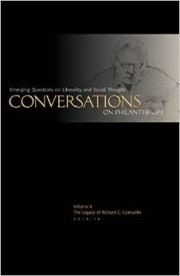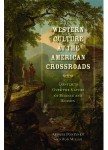Creating a Culture of Gift
In an important sense, human beings exist as actors in a drama or characters in a story. That play or story is generated in part by the cultural leaders and founders of their society, and in part by their own and others’ constructions of their actions and motives in the context of the existing social scenario or in protest against it. As Shakespeare put it so much more simply and eloquently, “All the world’s a stage,/ And all the men and women merely players.”
We learn how to be good members of a lawful polity by means of detective stories, police dramas, and courtroom fiction, among other things. As members of a nation, we are shown the path of duty by war epics, heroic statuary, martial music, and the like. As property owners, businesspeople, and participants in markets, we are offered rather less inspiring models these days, because of the fading yet still charismatic afterglow of socialist idealism, with its distaste for the top-hatted rich. But the world of commerce still gives us uplifting dramas of imaginative and creative managers, successful artists, clever experts, canny buyers of antiques, technological entrepreneurs, and the like; and commercial advertising places us in imagined worlds of glamour, excitement, or prosperous serenity. As members of a natural ecological community we now have available a range of roles and models—the environmental crusader, the wise and frugal householder, the scientifically informed backpacker, the wise and gentle aborigine—and a grand tradition of nature poetry, landscape painting, and landscape architecture. As human souls we are offered the splendor and richness of the world’s great religions in myth, ritual, hagiography, parable, mystical poetry, and sacred art and music.
Yet philanthropy seems to lack a representative cultural voice in the arts today. In the past, great donors might be depicted together with the Savior and his mother and the saints in altarpieces, and they would be credited explicitly in statuary, inscriptions, and the like. Charity galas and honorary degrees still celebrate munificent givers in a modest sort of way. But the cultural range and drama of the life of charitable giving has always been narrow in comparison with that of martial heroism, law enforcement, sainthood, environmental virtue, and even industrial entrepreneurship; and today there is very little in the public culture that might lay out for a donor a narrative or pilgrimage or theatrical revelation or grand myth to guide his endeavors or reward her generosity. As for why this is so, I suspect some combination of the resentful economic envy that also limits the range of both highbrow and populist celebrations of business energy, with the unease we feel about being morally in debt to others, the discomfort at being victims of the potlatch. (Potlatch is the practice in many traditional societies in which the rich and powerful “big men,” by means of lavish and wasteful gift-giving ceremonies, confirm and extend their influence, morally dominate their less wealthy neighbors, and compete with other big men.) Even if the generosity of the rich has no intent to oppress and dominate, the temper of our times discourages us from humble thanks: one legacy of the socialist enthusiasm of the last 150 years, and its concomitant sense of entitlement, has been the near-elimination in intellectual circles of gratitude as a major virtue, and with it any motivation for celebrating the benefactor.
But to celebrate and guide the charitable sector we must first understand what it is, what it isn’t, how it stands in relation to other aspects of the world we live in, and how it interacts with the various systems of government, marketplace, natural environment, and religion by which it is surrounded.




